The Math of Life and Death
by Kit Yates
The Math of Life and Death, by Kit Yates, a senior lecturer in mathematical biology at the University of Bath, is an excellent popular math book, demonstrating the many times math plays a critical role in our daily lives—often without us even knowing it.
Kit Yates chose the Best Math Books of 2019 for us. Is math really a matter of life or death? He spoke to us about his book in a Q&A.
The title of your book is The Math of Life and Death, which is quite a bold claim. Is it really life and death at stake?
Part of the design of the title is to show how important mathematics can be and some of the stories in the book do demonstrate that yes, sometimes maths can be a matter of life and death. For example, the formula that decides which drugs get funded on the NHS: for some people that formula is genuinely a matter of life and death.
Telling dramatic, real life stories is a really good way to get people into the underlying math. And whether we like it or not, death is a common experience. People die every day. Telling interesting stories, which have some jeopardy, is a great way to hook people in and explain the underlying concepts.
Your book is very readable and enjoyable, but in practical terms, for myself, I thought the chapter about debunking media statistics was particularly important. Almost every week there’s an article saying, ‘if you do x, there’s a y% chance you’ll get this disease.’ Do you want to talk a bit about how one should handle that kind of article, what your book recommends?
One of the main messages of the book—which goes through a lot of the chapters, not just the media one—is about questioning people who are wielding statistics or numbers, seemingly with authority. It’s newspapers, it’s adverts, it’s politicians, it’s doctors and it’s expert witnesses in law courts. Numbers sometimes seem to have this objectivity about them, people think they’re hard nuggets of truth, but they can be manipulated.
For example, in the media, reporting of absolute or relative risks can really mislead how we think of the risk of doing a particular action. One of the examples in the book is about eating bacon. A 20% increase in risk was reported—and I’ll admit that when I first read that story, I thought, ‘Gosh, has the risk gone up from 10% to 30%? That’s huge.’
But what they were actually doing was looking at the relative risks. If you don’t eat bacon, there’s a 5% risk of getting colorectal cancer over the course of your life time. If you do eat it, the risk is 6%. They’re taking that 1% difference and saying that as a proportion of the original 5%, the 1% increase is 20%. They’re really manipulating the figures to make the story more dramatic.
So one of the tips in the book is that if you don’t see two figures representing the absolute risks with and without the intervention, if you only see a single figure, relative risk for the disease, then you should be aware that you’re perhaps being conned. The relative risk is usually a much bigger number and bigger numbers sell more newspapers. No one would really be that worried about a 1% increased risk, but a 20% increase in risk catches people’s attention.
Just as I was reading your book last week there was a new headline about the dangers of menopausal women taking HRT. What can I do if I’m still a bit confused, because we’re not all mathematicians?
You certainly need to be distrustful of the single figure you see. If you don’t also get given the absolute figure—so that you can understand what the genuine risk per thousand of people in the population is—then you need to look for another source. Hopefully, the newspaper will have cited the original scientific article or at least mentioned where it was published and who the authors were. You can then go online and Google the authors and the journal, and possibly something about the subject. Sometimes the articles are behind a paywall, which can be frustrating, but more and more articles being published are free to access. There’s a big drive for that in the academic community and from government, so any government-funded research has to be made public.
So increasingly you can access the original scientific article. A lot of them now come with a one or two paragraph synopsis, which summarizes the findings for people who are not experts. Not a lot of people know this, but you can just go and read the scientific journal and find out what the genuine statistics are for a disease.
For me, the intersection between health and mathematics is very personal, because I have the BRCA1 breast cancer mutation. When I found out I had it, I was told I had an ‘up to 85% chance’ of developing breast cancer. I was given various options but was told it was a personal choice, what I wanted to do. But I didn’t really feel in a position to make a decision based on statistics. How do you get around that?
Percentages and decimals for expressing risk and probability are not always that helpful. In the book, one of the things I do—when I look at breast cancer screening, for example—is that instead of saying, ‘the prevalence of breast cancer in women over 50 is 0.4%’ I say, ‘Out of a thousand women, four will have undiagnosed breast cancer when they go for a mammogram.’ Putting it in terms of whole numbers with a reference population gives, I think, a much better feeling for the statistics.
In terms of making decisions about your own health, you’ve got to be proactive and read as much as you can and try and learn what these figures really mean. One thing I’m keen to emphasize is that I’m not advocating against screening programmes like the one for breast cancer. I just think people should be aware of the fact there are a lot of false positives in comparison to true positives in breast cancer screenings. People shouldn’t worry too much on the basis of a positive result before they’ve been for more accurate follow-up testing.
Yes, what you wrote about mammograms—and women with regular screening likely having at least one false positive in their life time—was a real eye-opener. I was also fascinated by the chapter about vaccinations and the HPV vaccine in particular. There’s a lot of really important information in the book.
Yes, this is the month HPV vaccination comes out for boys here in the UK, so it’s really pertinent timing. I have a son who is younger than 12, so from my point of view, it’s great timing because he will be given this vaccination. We don’t have a genetic predisposition, but my mum died of cervical cancer, so it’s quite a personal issue for me.
Is that what mathematical biology, your field, does—look at these kinds of issues?
It’s a really broad field, but yes: I went to a conference while I was writing the book and chatted to some of my colleagues who did the mathematical models for the cost effectiveness of the HPV vaccine for boys.
That’s one aspect of our subject, but we look at almost anything—from the way that DNA coils using topology, so very pure mathematics, all the way through to the things that I do: computer models of the way that locusts swarm or trying to understand the way that cells migrate in the embryo. That helps us understand what happens when the migration goes wrong and you get birth defects.
It’s used anywhere that we can apply mathematical modelling as well as statistics. A lot of people think mathematical biology must just be statistics. It is a part of it, but we’re also trying to build models that explain phenomena so that we can then make predictions about what would happen when we can’t do an experiment.
There are also lots of other interesting stories in the book. I studied history, so I’ve always heard about the Dreyfus affair and Émile Zola—but I didn’t realize that the mathematician Henri Poincaré had also played a role in exonerating Dreyfus.
Yes, these important mathematical figures do crop up surprisingly often in these real-life stories. But one thing I want to really emphasize is that my book is not a book about maths per se. It’s not a book for mathematicians. It’s a book about real people’s lives and the places where maths has impacted on them, perhaps without them even knowing it. It’s about telling their stories, but it’s also about learning from those stories and providing people with some tips and tricks and hints and hacks which they can use to navigate our increasingly quantitative world. It’s about encouraging people to question those who are wielding the power of mathematics, often against them, and to ask difficult questions. It’s really about trying to empower and emancipate people who have fallen out of love with or never had the love for mathematics. There are no equations in the book, so it’s hopefully very accessible.
Don’t you need to have quite a good grasp of mathematics to get on top of some of these things?
If you want to burrow down deeply into these areas and really get into the nitty gritty, yes—but not to grasp the concepts, which is what the book is all about. When they’re explained in broad terms, I don’t think people struggle with mathematical concepts. I think anyone who’s wielding a statistic should be able to explain it in terms that the layperson can understand. It’s not fair to use a statistic against people without being able to explain it. So I hope people will be able to grasp the concepts in the book, that’s the whole point.
Just the other day two friends were arguing about one of the examples that comes up in your book. One was saying what a coincidence it was that two people shared the same birthday, and the other friend, who is more mathematically minded, said, ‘Actually, it isn’t.’
Yes that’s a funny one. I mention it in my talks all the time because for people who haven’t come across it, it is really counterintuitive. When I first came across it, it was really surprising to me. That’s key, to me, to be able to remember how I felt when I first saw these counterintuitive ideas.
In the book I use the example of two terrorist incidents happening on the same day, May 22nd—one in 2013 and another in 2017—which again puts the mathematical problem into a relevant context. Sebastian Gorka, then deputy assistant to US President Donald Trump tweeted ‘Dates matter to Jihadi terrorists.’ It’s another of those times where you see what happen if people are just using numbers—without even knowing that they’re doing it. He’s basically saying Jihadi terrorists are highly organized, because two events were planned for the same day. But actually if the 39 terrorist events against western countries between April 2013 and April 2018 occurred at random, the probability of at least two happening on the same day is very high anyway, more than 80%. We should be way more surprised if two of them didn’t fall on the same day than that they do.
You also teach maths, though at university rather than school level. Why do you think people are so unconfident about maths and scared of it? Is there anything to be done about it?
My feeling is that maths is a subject that builds on itself, so if you get behind at the start, early on in school, then it can be really difficult to catch up. To understand multiplication you need to know that it’s repeated addition. So unless you can do addition, multiplication is difficult. That goes on throughout mathematics.
So I think that often people—who’ve maybe not had a very good teacher—have become disillusioned with maths early on. That’s then a vicious circle that gets worse and worse.
I’m not going to suggest what we can do to tackle that in schools, because that’s not my area of expertise, but certainly when I teach at university, I try to bring in demonstrations and play games and set puzzles for my students, because even though we’re doing quite high level mathematics, it doesn’t hurt to be engaged and entertained by mathematics, to keep the enthusiasm going.
At school level, perhaps encouraging people by showing what the real life uses of mathematics are might help, so students know why they’re learning it, and it’s not just, ‘You need to know how to solve quadratic equations, here are some exercises to do.’ Actually showing what those equations do is super important so that you motivate people to want to learn. I think motivation is a big part of it.
In your experience, do some people just naturally operate more easily in a mathematical world while others find it harder?
I’m not going to say that everyone should do degree-level mathematics, because I don’t think that’s true. There are genuine differences in ability – mathematics does come easier to some people than others, but I think that with hard work everyone can get to a level of mathematics where they can use it in real life situations.
There’s a new qualification called Core Maths, which is all about applying mathematics in the real world and teaching people practical mathematics. With good teaching, it should be accessible to everyone.
And did you just love maths from the start?
Yes. I just liked the fact that there was a right answer. I also did history, geography and English. Obviously, with those subjects, there are certain facts that you need to get in there. But I didn’t like the fact that when you were writing an essay it was subjective, it was someone else’s opinion of what you were writing.
With mathematics it was easier. Often, even without looking up the answers in the back, you know when you’ve got the right answer to a math problem. Even at research level, there’s an intuition that you have. You know when you’ve got something correct, when the solution was just too perfect not to be true. That’s what I really like about mathematics.
Our most recommended books
-

How to Talk So Kids Will Listen and Listen So Kids Will Talk
by Adele Faber and Elaine Mazlish -

The Algorithm Design Manual
by Steven S. Skiena -

The Glass Bead Game
by Hermann Hesse -

Proofs and Refutations: The Logic of Mathematical Discovery
by Imre Lakatos -

Humble Pi: A Comedy of Maths Errors
by Matt Parker -

The Evolution of Cooperation
by Robert Axelrod
Support Five Books
Five Books interviews are expensive to produce, please support us by donating a small amount.
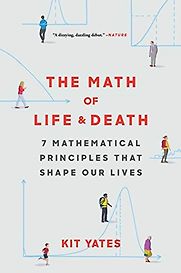
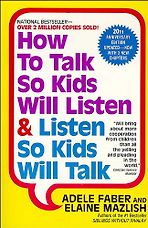
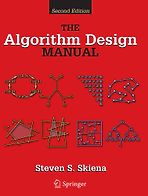
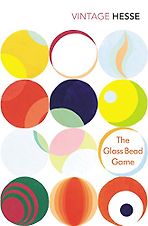
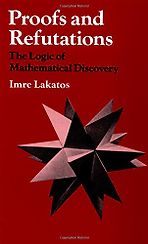
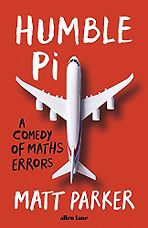
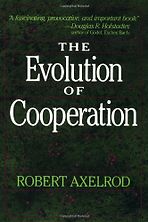
The book, according to the author